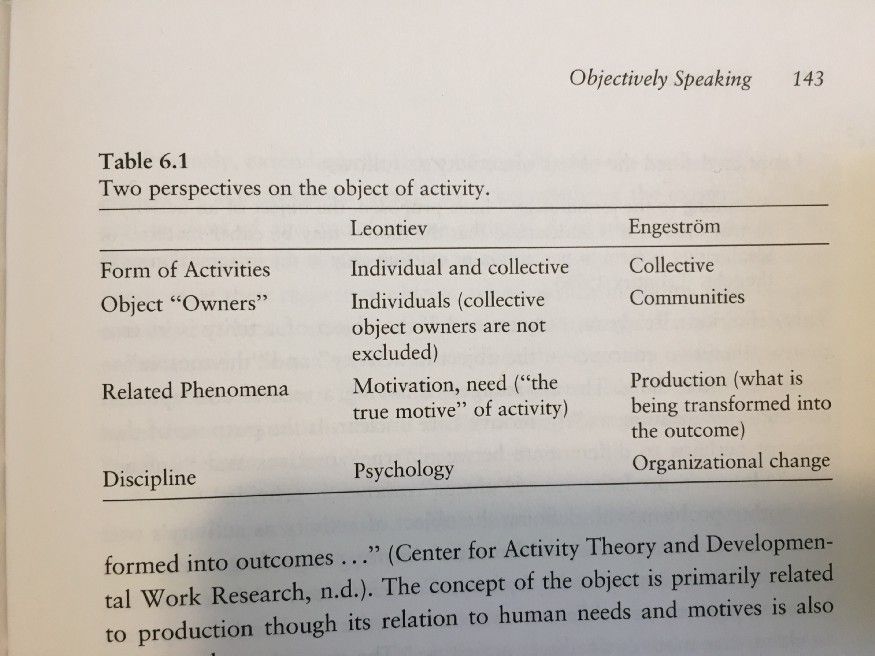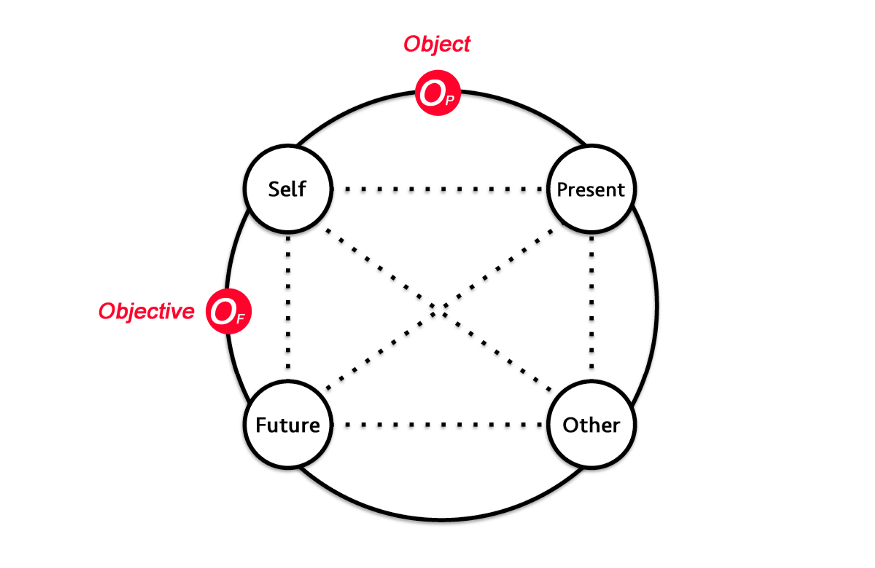The Concept of Object [Activity Theory]
![The Concept of Object [Activity Theory]](/content/images/size/w960/2021/10/IMG_2378.jpg)
The concept of “Object” is the foundational concept of Activity Theory. According to the founder of Activity Theory A. N. Leontiev, “Separate concrete types of activity may differ among themselves according to various characteristics: according to their form, according to the methods of carrying them out, according to their emotional intensity, according to their time and space requirements, according to their physiological mechanisms, etc. The main thing that distinguishes one activity from another, however, is the difference of their objects. It is exactly the object of an activity that gives it a determined direction.” (1978, p.98)
So, what’s the object of the activity?
The answer from Leontiev is the motive of activity. Leontiev claimed, “According to the terminology I have proposed, the object of an activity is its true motive. It is understood that the motive may be either material or ideal, either present in perception or exclusively in the imagination or in thought. The main thing is that behind activity there should always be a need, that it should always answer one need or another.” He also added a note about the term motive, “Such restricted understanding of motive as that object (material or ideal) that evokes and directs activity toward itself differs from the generally accepted understanding”.(1978, p.98)
According to Kaptelinin and Nardi (2012), “In Russian there are two words with similar but distinct meanings: objekt and predmet. Both refer to objectively existing entities, but the notion of predmet typically also implies a relevance of the entity in question to certain human purposes or interests…Leontiev deliberately referred to the object of activity as predmet rather than object. However, this distinction is usually lost in English translation since both words are translated as ‘object.’ ” (p.29)
The Object-orientendness Principle
Following Wertsch (1981), Kaptelinin and Nardi (2012) identified five basic principles of Leontiev’s activity theory:
- Object-orientedness
- The hierarchical structure of activity
- Mediation
- Internalization and externalization
- Development
The Object-orientedness principle is similar to other theories’ terms such as “needs”, “intentionality” or “intention”. According to Kaptelinin and Nardi (2012), “…all human activities are directed toward their objects and differentiated from one another by their respective objects. Objects motivate and direct activities, around them activities are coordinated, and in them activities are crystallized when the activities are complete.” (p.29)
As organizational scholar Frank Blacker (2009) claimed, “For newcomers to activity theory, the notion of the object of activity is unfamiliar and may not be easy to understand. Indeed, the term is complex; objects of activity need to be understood as simultaneously given, socially constructed, contested, and emergent.” He also pointed out, “The complexity of the term should not be thought of as a shortcoming of activity theory, however. Rather, it both reflects and reveals the complexity of human activity. ”
If we want to apply it to the field of organization, it’s better to parry the prescribed objectives of organizations and follow Blacker’s advice, “When it is applied to organizational analysis, it can be said that organizations coalesce around objects of activity that are partly shared, partly fragmented, possibly contested, and certainly emergent, and because objects of activity are likely to be rooted in multiple activity systems, they may not be at all easy to change in the short term.” (2009)
Object v.s. Objective
However, the concept of Object has a different meaning in the Activity System Model which was developed by Yrjö Engeström with the above triangle diagram. According to Kaptelinin and Nardi (2006), “For Leontiev, the object (predmet) of activity is an object of activities carried out by individuals, either collectively or individually, and is related to motivation. For Engeström, the object, introduced through the ‘subject — object’ distinction — that is, as objekt — is the object of collective activities. The object is defined as ‘the raw material’ or ‘problem space’ at which the activity is directed and which is molded and transformed into outcome…’ ” (2006, p.142–143)
Here we face two issues. The first one is the language issue. According to Kaptelinin and Nardi (2012), “In Russian there are two words with similar but distinct meanings: objekt and predmet. Both refer to objectively existing entities, but the notion of predmet typically also implies a relevance of the entity in question to certain human purposes or interests…Leontiev deliberately referred to the object of activity as predmet rather than object. However, this distinction is usually lost in English translation since both words are translated as ‘object.’ ” (p.29) The second one is the theoretical issue. Leontive and Engeström offer two theoretical accounts of human activities. One is about psychology while the other is about organizational change.

Some North American scholars use a special format to use the concept of objective: object(ive). For example, David Russell uses the following sentences to describe Activity Theory in a paper titled Activity Theory and Its Implications for Writing Instruction, “I use the term object(ive) because it refers not only to persons or objects in a passive state (what is acted on) but also to the goal of an intentional activity, an objective, although the objective may be envisioned differently by different participants in the activity system.”
Future and Present
In 2021, Oliver Ding connected Activity Theory and Anticipatory Systems Theory. In the diagram below, he assigned Object to the Present and Objective to the Future.

The above diagram is part of the iART Framework. The name iART stands for i +Activity + Relationship + Time. The framework highlights three contexts of personal development:
- Practice context: the “Know—Act” ecology (Activity).
- Spatial context: the “Self — Other” ecology (Relationship)
- Temporal context: the “Present — Future” ecology (Time).
From the perspective of the iART framework, it’s clear that we have to use two terms because Objective (what is motive about) is about the Future while Object (what is acted on) is about the Present.
Based on the iART framework, Oliver Ding developed the Activity Activity System (AAS) framework. See the diagram below. You can find more details in Strategy as Anticipatory Activity System.

A primary pair of concepts of AAS are First-order Activity and Second-order Activity. While First-order Activity refers to goal-directed Activity, Second-order Activity refers to discovering a goal for First-order Activity. You can find more details in A Typology for Anticipatory Activity System.
